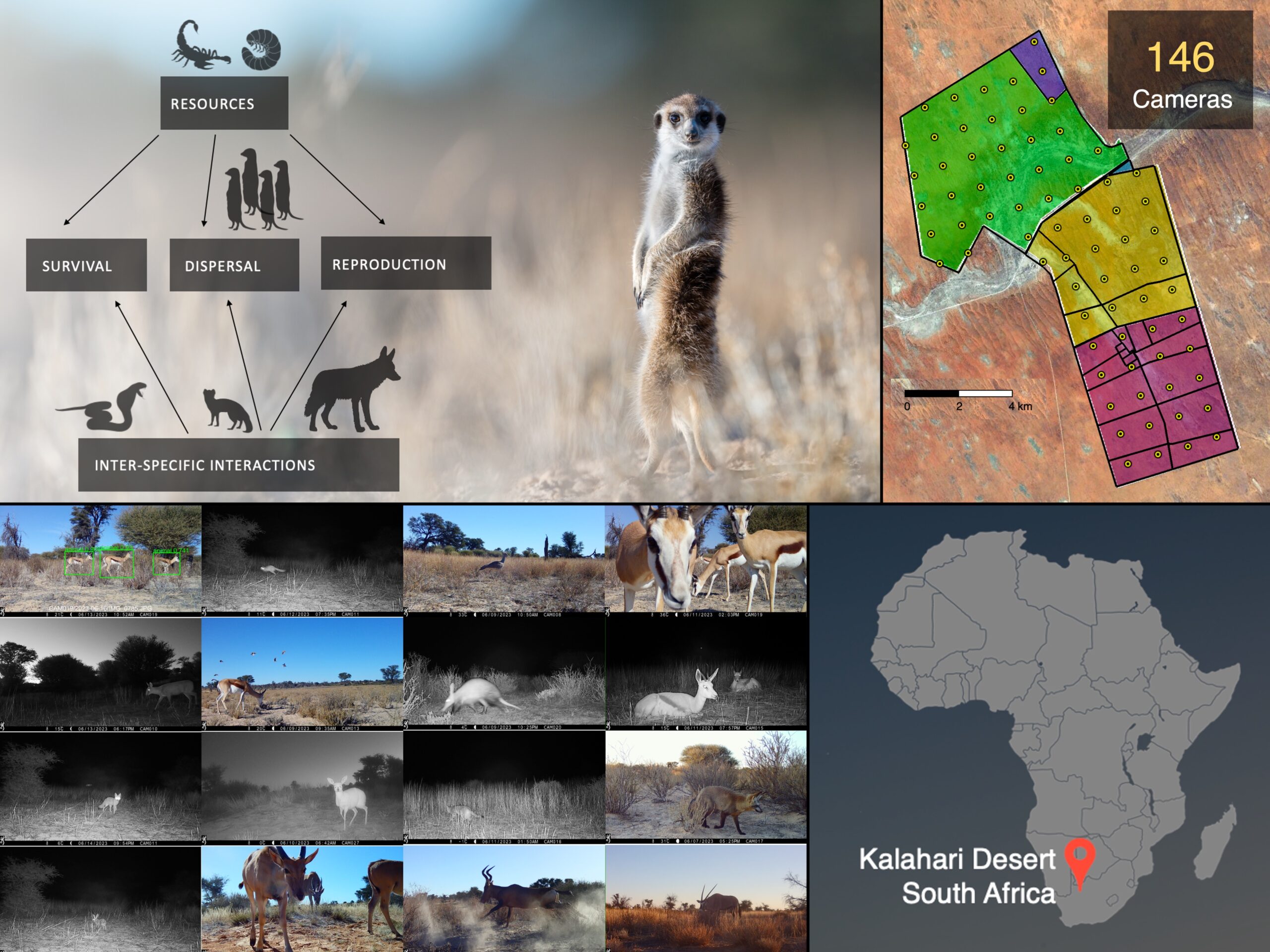The Kalahari Biodiversity Project represents a significant advancement in ecological research at the Kalahari Research Centre. This initiative broadens the scope from a single species focus, such as the cooperative breeding in meerkats, to a more comprehensive ecological assessment to both supplement ongoing research at the centre and investigate biodiversity patterns at a broader scale. A pivotal development in this expansion was the acquisition of an additional 40 km² of adjacent farmland by the Kalahari Research Trust, made possible by the financial support of Zoo Zurich in collaboration with the University of Zurich, enlarging the study area to a total of 72 km². This strategic expansion allows for an in-depth examination of how diverse land use methods—spanning from untouched natural habitats to various intensities of farming—affect biodiversity.
Our research utilises a network of ~150 camera traps set up in a 1×1 km grid across the expanded study area, enabling detailed monitoring of vertebrate diversity and species interactions under different land use and climatic conditions. In addition, a newly implemented trapping system is dedicated to studying soil invertebrate diversity, thereby providing a comprehensive understanding of the ecological interplay at different trophic levels, including insects, which are the main food source for most of the vertebrates currently studied on site.

The project’s objectives are multi-faceted: 1) to evaluate the temporal and spatial dynamics of vertebrate and invertebrate biodiversity in relation to land use and climate change; 2) to use the extended 70 km² area as a model for projecting biodiversity scenarios in the larger Kalahari region under various climate and land use changes; 3) to explore the interconnectedness of vertebrate and soil invertebrate biodiversity, and its implications for the demography of focal species; 4) to refine and develop more accurate methods for estimating animal abundance and density from camera trap data.
This project, marking a notable expansion in scale and scope of biodiversity monitoring, is expected to contribute significantly to theoretical, methodological, and applied ecological research, advancing our understanding of ecosystem dynamics and informing conservation and land management strategies in the Kalahari region.
In collaboration with:
Maria Paniw (Doñana Biological Station, Spanish Council for Scientific Research)

















